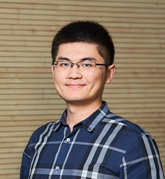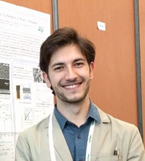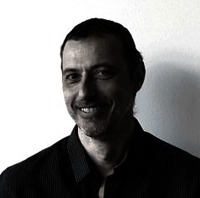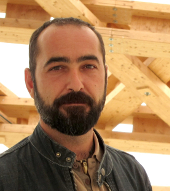Invited speakersProf. Armin Feldhoff, Institute of Physical Chemistry and Electrochemistry, Leibniz Universität Hannover, Germany : "Thermoelectric oxydes: materials and generators" Sol-gel process was used to produce heavily doped misfit-layered cobaltate Ca3Co4O9, which by subsequent heat treatment in suitable atmosphere self-assembled into p-type semiconducting 2D nanocomposite as confirmed by high-resolution transmission electron microscopy (HRTEM). Nanocomposite was preserved in sintered ceramics, which showed enhanced thermoelectric properties parallel to the cold-pressing direction as applied to the green body. This went along with the preferential alignment of multiphase misfit-layered oxide platelets as confirmed by scanning electron microscopy (SEM). HRTEM confirmed 2D nanoslabs of three individual thermoelectric oxides, which contributed synergistically to the thermoelectric properties of the nanocomposite. By increases in both the isothermal electrical conductivity and the Seebeck coefficient, the power factor was enhanced to 6.5 µW cm-1 K-2 at 1073 K in air. According to Ioffe plots, i.e. thermoelectric power factor versus electrical conductivity, 2D nanocomposites where chosen to manufacture prototype thermogenerators (TEGs). The n-type legs were made from doped indium-tin-oxide (ITO). The electric current-power characteristics of TEGs hint to the primary importance of the power factor compared to the thermoelectric figure-of-merit when a high electric power output is desired.
Prof. Feldhoff’s research interests are in thermo-iono-electric (TIE) materials for energy conversion. His activities link materials synthesis with the microstructure, as obtained by scanning and transmission electron microscopy as well as x-ray diffraction, and functionality. Aim is always a knowledge-based approach to bring new functionality into materials and devices. He has published more than 150 papers in peer-reviewed journals. Actually, his h-index is 42 with more than 6000 citations. He received his diploma in physics from the University of Münster (Germany) and received his PhD degree from the Martin-Luther University Halle-Wittenberg (Germany). He was pre- and post-doctoral researcher at the Max Planck Institute of Microstructure Physics in Halle (Germany). He was postdoctoral associate at the Department of Materials Science and Engineering at Cornell University in Ithaca (NY, USA) and at the Centre d’Études de Chimie Métallurgique of the CNRS in Vitry sur Seine (France). He is head of the Nanostructure Laboratory at the Institute of Physical Chemistry and Electrochemistry of the Leibniz Universität Hannover (Germany) and holds the venia legendi for Physical Chemistry. In the German Society for Electron Microscopy, he is serving in the editorial team of Electron Microscopy. He is acting as associate editor of both Energy Harvesting & Systems and the Journal of Electronic Materials. ----------------- Dr. Anne Labouret, SOLEMS S.A., Palaiseau, France : "Technology and capabilities of thin silicon solar cells for low light energy harvesting" The development of smart objects (mostly connected in smart homes, smart cities, industry, etc.) require an intelligent energy harvesting strategy, the key issue being the autonomy in a given environment. Very often, the main available energy is light, sometimes sunlight when the product is located outdoors, but most of the time under indoor artificial light. Thin-film amorphous silicon material offering interesting properties under low illumination, even very dim light, it is possible to power this type of applications located indoors, provided their consumption has been optimized. The talk will show the technology, the products and the potential applications of thin film silicon PV cells in different illumination conditions.
Anne Antoine-Labouret is an engineer trained in ESPCI – Paris (Ecole Supérieure de Physique et Chimie de Paris) and made her PhD in Ecole Polytechnique (Palaiseau, France) in the field of thin film silicon growth studied by in-situ spectroscopic ellipsometry. Then she joined SOLEMS, french producer of PV cells and low power modules, to deal with thin film PVD process development and modeling. After some work on PV module encapsulation and certification for a few years, she became Sales and R&D Manager in 1993, when SOLEMS made a management buyout. She is member of the shareholders. Since January 2018, she is CEO of SOLEMS, now generating 530k€ of turnover. She wrote 2 books with DUNOD publisher on photovoltaics, 5 editions each, and made some courses in various universities degrees. ----------------- Dr. Yang Bai, Microelectronics Research Unit, Univ. of Oulu, Finland :
"A multi-functional photo-ferroelectric ceramic for multi-source energy harvesting and sensing with only one component"
Photo-ferroelectric materials1 have been under investigation since the 1970s. They are a family of materials co-exhibiting ferroelectricity and photovoltaic effect. For nearly 40 years, photo-ferroelectrics have been limited to theoretical studies due to either wide band gaps or weak ferroelectricity2. There was no composition found to be a narrow band gap (i.e. visible-range, < 1.77 eV) semiconductor and a strong ferroelectric thus piezoelectric material simultaneously. The wide band gaps lead to inefficient photovoltaic effects, and, the weak ferro-/piezoelectric properties restrict the sensitivity to light/electric/strain excitations. This issue then hindered the practical use of photo-ferroelectrics in multi-functional components. In this talk, a perovskite-structured ceramic material will be presented. It is based on a widely used lead-free ferro-/piezoelectric composition – (K0.5Na0.5)NbO3 (KNN). By doping Ba(Ni0.5Nb0.5)O3-δ (BNNO) into the KNN matrix, nickel ion-oxygen vacancy combinations (Ni2+-VO2-) are introduced. The newly made composition is abbreviated as KNBNNO hereinafter. Due to the doping, the charge transfer from the oxygen 2p status at the maximum level of the valence band to the transition metal (Nb) d states at the minimum level of the conduction band is stimulated. As a result, the KNBNNO is able to exhibit a narrow band gap of 1.6 eV. Meanwhile, the strong ferroelectric, piezoelectric and pyroelectric properties of the KNN are maintained by a large extent3. Such multi-functional properties enable the KNBNNO to be simultaneously used for visible-range (solar) photovoltaic effect and ferro-/piezo-/pyroelectric sensing. The KNBNNO is the first material of its kind discovered in history, and thus has combined the separate families of visible-range band gap semiconductors and strong ferro-/piezoelectric materials. Figure 1 briefly illustrates the material of KNBNNO and its multi-functionality. In order to demonstrate the utilisation case and feasibility of the KNBNNO ceramics, a cantilever configuration has been fabricated and tested. The device is able to simultaneously convert solar, thermal (temperature fluctuation) and kinetic energy into electricity – multi-source energy harvesting with only one component. Furthermore, the harvesting and sensing functions can also be integrated in the same material/component, e.g. the DC photovoltaic signal for power source whilst the AC piezoelectric/pyroelectric signals for sensing, to achieve an energy efficient design. Compared to conventional individual and hybrid energy harvesters/sensors, the benefit of using the KNBNNO is that multiple energy sources can interact with the device made from it without the need of increasing the complexity and size of the entire system. This will open doors for the development of novel one-component, miniaturized multi-source energy harvesters as well as monolithic, self-powered and battery-less sensing systems. The interaction between the visible light and domain walls in the KNBNNO will also stimulate the development of next-generation opto-ferroelectric devices such as light-(re-)writable data storage distinguishing wavelengths4. 1. Paillard, C.; Bai, X.; Infante, I. C.; Guennou, M.; Geneste, G.; Alexe, M.; Kreisel, J.; Dkhil, B. Photovoltaics with Ferroelectrics: Current Status and Beyond. Advanced Materials 2016, 28, 5153-5168. 2. Bai, Y.; Jantunen, H.; Juuti, J. Energy Harvesting Research: The Road from Single Source to Multisource. Advanced Materials 2018, 30, 1707271. 3. Bai, Y.; Tofel, P.; Palosaari, J.; Jantunen, H.; Juuti, J. A Game Changer: A Multifunctional Perovskite Exhibiting Giant Ferroelectricity and Narrow Bandgap with Potential Application in a Truly Monolithic Multienergy Harvester or Sensor. Advanced Materials 2017, 29, 1700767. 4. Bai, Y.; Vats, G.; Seidel, J.; Jantunen, H.; Juuti, J. Boosting photovoltaic output of ferroelectric ceramics by opto-electric control of domains. Advanced Materials 2018, 1803821. Dr. Yang Bai is a tenure track Assistant Professor for Small-power Self-sufficient Sensor System in Microelectronics Research Unit, University of Oulu, Finland. He obtained his Bachelor degree in 2011 at Tianjin University, China, and PhD degree in 2015 at University of Birmingham, United Kingdom. In 2016, he was granted a Marie Sklodowska-Curie Individual Fellowship under European Union’s Horizon 2020 research and innovation program. He is also an elected committee member of the IOP (Institute of Physics) Energy Group, UK. His research interests include multi-functional perovskites, photo-ferroelectrics, ferroelectric and piezoelectric materials and energy harvesting technology. -----------------
Mr. Mario Urso, CNR-IMM & University of Catania, Catania, Italy :
"Novel Ni-based nanostructures for hybrid supercapacitors" The growing energy demand, the finite supply of fossil fuels and the climate change push the scientific community towards a responsible research and innovation in renewable energy resources and related energy storage technologies. A large variety of energy storage devices has been developed so far, including batteries and supercapacitors. Recently, novel supercapacitor-battery hybrid systems, namely, hybrid supercapacitors, have received increasing interest since they combine the high power density of a supercapacitor-like material (negative electrode) with the high energy density of a battery-like material (positive electrode) [1]. Among the more investigated materials for positive electrode in hybrid supercapacitors there are NiO and Ni(OH)2, thanks to their low-cost, well-defined redox reactions, environmental friendliness, and high theoretical capacity. Actually, several promising NiO and Ni(OH)2 nanostructures have been recently presented, however only a few have a capacity close to the theoretical one. Moreover, most of them suffer from poor rate capability, since capacity dramatically reduces at the high charge-discharge rates required for high-power applications. This is commonly attributed to the poor electrical conductivities of NiO and Ni(OH)2. In this work, we present a simple and low-cost approach to fabricate a novel Ni(OH)2@Ni core-shell architecture with superior specific capacity and rate capability. The relationships between electrochemical properties and core-shell structure are investigated and modelled. Our innovative design has potential applications in hybrid supercapacitors, lithium-ion batteries, electrochemical (bio)sensing, gas sensing and photocatalysis. [1] W. Zuo, R. Li, C. Zhou, Y. Li, J. Xia and J. Liu, Adv. Sci., 2017, 4, 1–21.
Mario Urso was born on 21th of October 1992 in Catania, Italy. He attained his Master Degree in Physics summa cum laude from the University of Catania on October 2016. In November 2016 he started the Ph.D. course in Materials Science and Nanotechnology at the University of Catania, under the supervision of proff. F. Priolo and S. Mirabella. He was visiting student at the Tel Aviv University (Israel) under the supervision of prof. Yosi Shacham. His main scientific interests are focused on the low-cost synthesis of Ni- based nanostructures for energy storage and sensing applications. He presented the results of his activity giving seven oral contributions at national and international conferences. He won the “Graduate Student Award” of the European Materials Research Society during the E-MRS Spring Meeting 2017. -----------------
Prof. Chris Bowen, Univ. of Bath, UK :
"Piezoelectric and pyroelectric materials and structures for energy harvesting"
The continuing need for reduced power requirements for small electronic components, such as wireless sensor networks, has prompted renewed interest in recent years for energy harvesting technologies capable of capturing energy from ambient vibrations and heat. This presentation provides an overview of piezoelectric harvesting system along with the closely related sub-classes of pyroelectrics and ferroelectrics [1,2]. These properties are, in many cases, present in the same material, providing the intriguing prospect of a material that can harvest energy from multiple sources including vibration and thermal fluctuations [3,4]. Examples of modeling and manufacture of porous materials and pyroelectric harvesting are discussed where the harvesting generates power from temperature fluctuations using piezoelectric materials such as lead zirconate titanate (PZT) and polyvinylidenedifluoride (PVDF). The potential of novel porous and sandwich structures are also described. Water-splitting using pyroelectric materials are examined analytically and experimentally. [1] C. R. Bowen, H. A. Kim, P. M. Weaver and S. Dunn, Piezoelectric and ferroelectric materials and structures for energy harvesting applications, Energy and Environmental Science, 7, 25-44 (2014) [2] CR Bowen, J Taylor, E LeBoulbar, D Zabek, A Chauhan, R Vaish, Pyroelectric materials and devices for energy harvesting applications, Energy & Environmental Science 7 (12), 3836-3856 (2014) [3] M Xie, D Zabek, C Bowen, M Abdelmageed, M Arafa, Wind-driven pyroelectric energy harvesting device, Smart Materials and Structures 25 (12), 125023 (2016) [4] D Zabek, J Taylor, V Ayel, Y Bertin, C Romestant, CR Bowen, A novel pyroelectric generator utilising naturally driven temperature fluctuations from oscillating heat pipes for waste heat recovery and thermal energy harvesting, Journal of Applied Physics 120 (2), 024505 (2016) 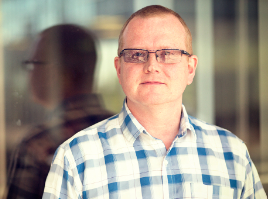 Christopher Rhys Bowen has a BSc degree in Materials Science from the University of Bath (1986-1990) and a DPhil in Ceramics from the University of Oxford (1990-1993). Post-doctoral work has been undertaken at Tecnische Universität Harburg-Hamburg and University of Leeds (1994-1996). He was Senior Scientist at the Defence Evaluation and Research Agency from 1996-1998. He joined the University of Bath as a Lecturer in 1998 and is now Professor of Materials and ERC Advanced Investigator, ERC Grant Agreement no. 320963 on Novel Energy Materials, Engineering Science and Integrated Systems (NEMESIS). Research areas include energy harvesting, piezoelectric materials and functional ceramics.
-----------------
Dr. Raphaël Salot, CEA-LETI, Grenoble, France : "Tiny solid state lithium microbatteries for medical devices"
Thin film lithium solid state microbatteries have already demonstrated their capabilities to provide safe and miniaturized energy storage solutions. Last development performed on tiny components (surface between 5 and 80 mm², thickness from 120 µm to mm) at CEA-LETI will be presented leading to unique characteristics perfectly suited for medical applications (ophtalmic, implants, hearing aids…). Main focus points will be: industrial manufacturing process on 200 mm substrates ; high energy density results for tiny components; stacked components for high capacity. Available characteristics will then be discussed regarding requirements of different medical systems and applications.
Dr. Raphaël Salot is Head of the CEA-LETI Embedded Micro battery Laboratory. He holds a PhD in materials and electrochemical science. He works at CEA since 1996 as a research engineer and is in charge of the micro-battery development since 2000. He now manages the R&D activities of CEA/LETI on lithium thin film batteries. He is the coordinator of the ENSO European project dedicated to development of autonomous Micro Energy System, with a 80 M€ budget. He is the author of 30 patents in the field of energy storage. -----------------
Dr. Jean-François Robillard, IEMN, Lille, France : " Microwatt silicon thin-films thermoelectric harvesters "
The blooming of the so-called Internet-of-Things (IoT) will depend on the availability of inexpensive, reliable and compact energy harvesters. Thermoelectricity features key advantages of reliability and is complementary to other sources but it’s efficiency is intrinsically limited to a few percent around room temperature and usually relies on harmful materials. Two decades of research on low-dimensionality materials have shown the potential of quantum dots, nanowires, thin-films [1] or nano-composite materials towards reduced thermal conductivities and increased thermoelectric efficiency. It is known that in silicon thin-films, patterned through a so-called phonon engineering approach [2], the thermal conductivity is reduced. Therefore, it is expected that such materials could reach competitive thermoelectric power densities [3]. In this talk, I will discuss the merits of this approach in terms of heat gradient management in the converter. I will also review the latest results obtained in terms of fabrication and characterization [4] of micro-scale, phonon engineered silicon thin-films thermoelectric converters [5]. [1] A.M. Massoud, J.-M. Bluet, V. Lacatena, J.-F. Robillard, P.-O. Chapuis, Applied Physics Letters, 111, 063106 (2017) [2] V. Lacatena, M. Haras, J.-F. Robillard, S. Monfray, T. Skotnicki, E. Dubois, Applied Physics Letters 106, 114104 (2015) [3] M. Haras, V. Lacatena, F. Morini, J.-F. Robillard, S. Monfray, T. Skotnicki, E. Dubois, Materials Letters 157, 193 (2015) [4] M. Haras, V. Lacatena, T. M. Bah, S. Didenko, J.-F. Robillard, S. Monfray, T. Skotnicki and E. Dubois, IEEE Electron Device Letters, 37, 1358 (2016) [5] T.-M. Bah et al. (in preparation) 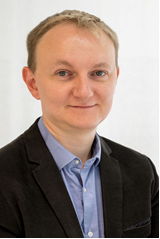 Jean-François Robillard was born in France in 1980. He earned his MSc and « Magistère » degrees in physics from Université Paris XI in 2004. He got a PhD in 2008 from Université de Lille for his experimental work on time-resolved nano-objects elastic dynamics. He joined Ecole Centrale de Lille in 2008 where he worked on the theoretical aspects of frequency tunable Phononic Crystals. In 2009, he joined the University of Arizona as a Research Associate. Since 2010, J.F. Robillard is Associate Professor at Institut Supérieur d’Electronique et du Numérique (ISEN) and Institut d’Electronique, Micro-Electronique et de Nanotechnologie (CNRS). His current research is related to theoretical and experimental aspects of phonon propagation in periodically structured materials and their application to micro-engineered thermoelectric energy harvesters. In 2013, J.F. Robillard was awarded an ERC Starting Grant for his project on Unconventional Principles of Thermoelectric Generation. This project aims at achieving high efficiency thermoelectric converters by artificially reducing heat transport.
-----------------
Mr. Henrik Zessin, Fraunhofer Institute for Integrated Circuits IIS, Nürnberg, Germany : "Energy Harvesting from multiple sources"
A major challenge of the Internet-of-Things is how to power all the wireless sensor nodes. Typically, these devices are supplied with batteries. However, the increasing number of nodes leads to a huge amount of waste batteries and the maintenance costs of replacing or recharging batteries at a regular interval are significant. Energy Harvesting can enable autarkic, self-powered sensors that do not need replacement of batteries or access to grid power. Different Energy Harvesting Generators need different kinds of power management circuits if the small amounts of ambient energy are to be adapted and stored most efficiently. Some applications have multiple ambient energy sources available, which requires a sophisticated power management architecture to employ all potential harvesters. Furthermore, especially during the development of an Energy Harvesting application, it is important to know the generated electrical power of a dedicated generator in terms of voltage and current. The talk will present an Energy Management system which supports multiple energy sources like solar cells, thermoelectric generators, piezoelectric and electrodynamic generators. All sources have their own, independent power management system optimized for the generator type. Each channel is monitored in terms of voltage and current. All sources have the option to start up the system from a complete off stage. Each source can be switched independently and all measured data can be logged. 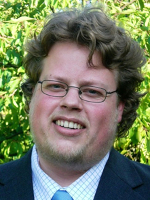 Henrik Zessin studied Mechatronics at the University of Erlangen / Germany and graduated with a Dipl.-Ing. degree in 2010. Since 2010, he works for the Fraunhofer IIS in the self-powered radio systems department. He is a project manager in the “integrated energy supplies” group where he is doing research and design in the field of power and battery management for electrodynamic energy harvesting. The topic of his PhD thesis is power management for combined piezoelectric and electrodynamic generators. -----------------
Dr. Konstantinos Termentzidis, CETHIL, Lyon, France : "Nanostructuration and thermoelectricity"
Nanostructures and nanostructured materials as 2D and 3D nanowire networks or phononic crystals are potential metastructures for nanoelectronics and thermoelectric applications. This new class of nanoarchitectured materials have interesting physical properties due to their low mass density and their high surface-to-volume ratio. Here, we report on thermal transport properties in 2D and 3D interconnected nanowire networks as well in phononic crystals taking into account the existence of native oxides.
Konstantinos TERMENTZIDIS is a CNRS researcher and he works at the CETHIL laboratory (INSA of Lyon) since 2017, and at LEMTA laboratory (University of Lorraine) since 2012. He started his studies at the Aristotle University of Thessaloniki (Physics Departement and Master Material’s Physics and Technology), and he obtained his PhD at the University of Vienna, at the Computational Material Science group (2007). His main scientific interest is the theoretical and computational nanoscale heat transport. During, the last 12 years he has studied with atomistic simulations, the phonon transport in nanostructures and nanostructured materials. The nanoscale heat transfer is a crucial issue for a large scope of contexts and applications as biology, aerospace, communications, electronics and energy. The behavior, reliability, lifetime and cost of such devices depend on the way the system releases heat. Termentzidis with his work elucidated the interaction of phonons with interfaces and surfaces at the nanoscale, a key point to design materials with tailored properties and systems with controlled behavior. |


